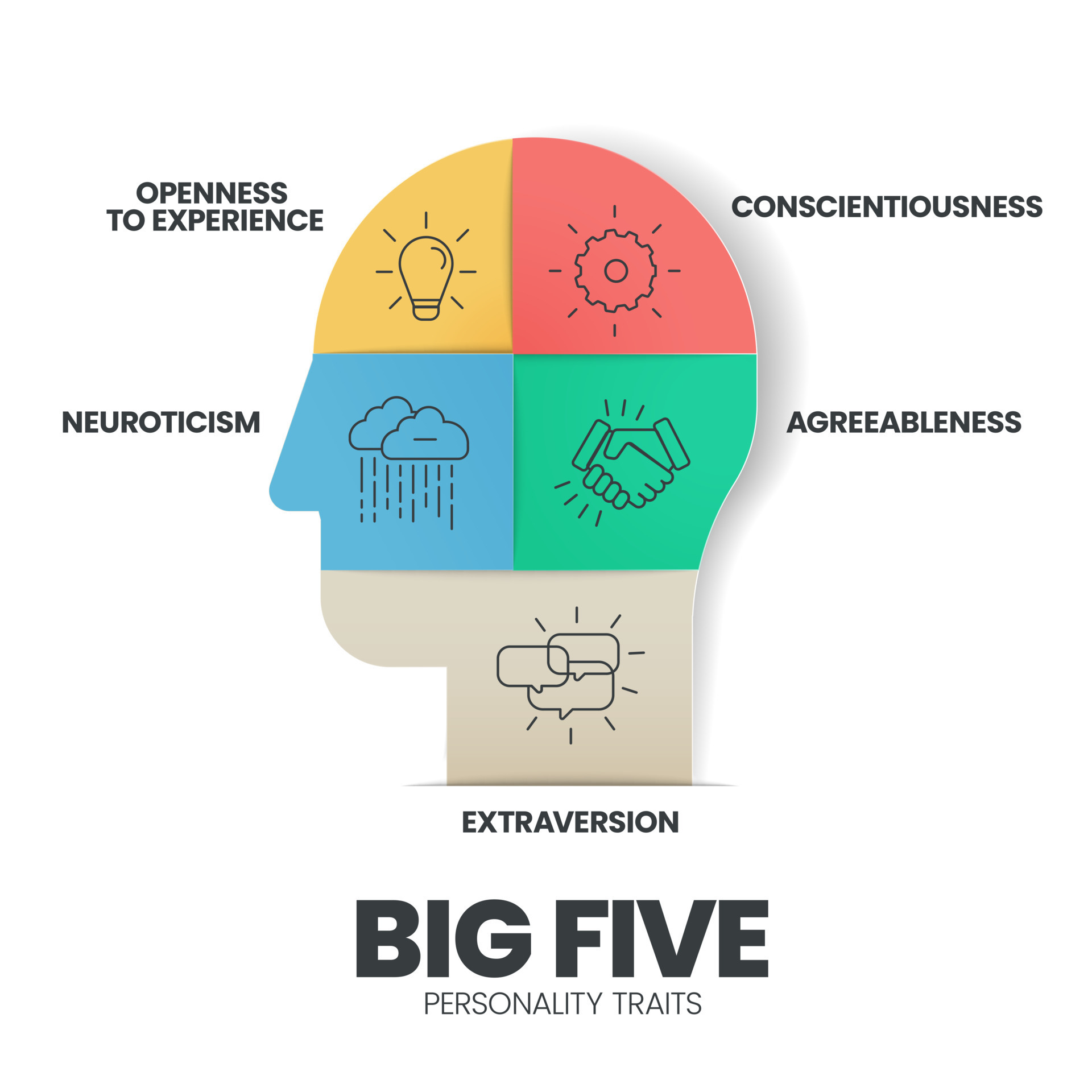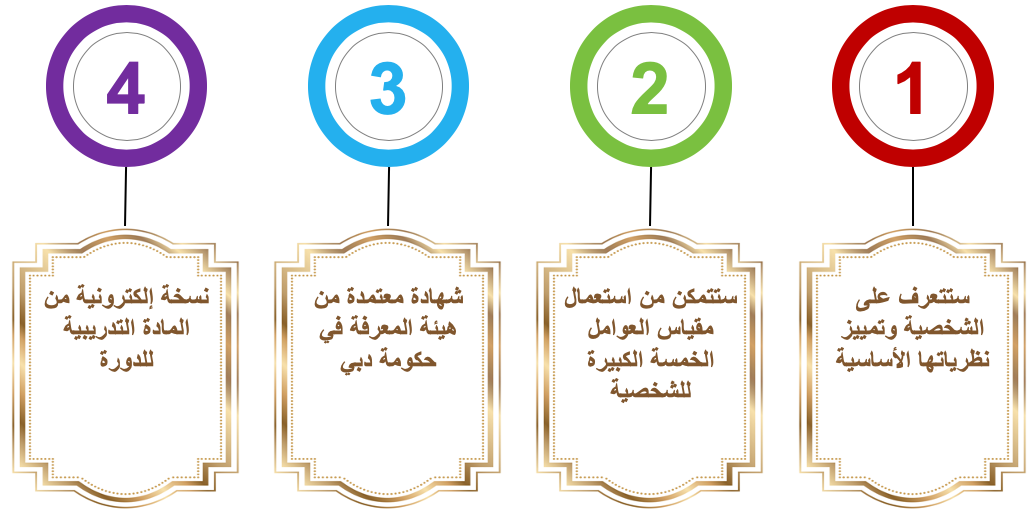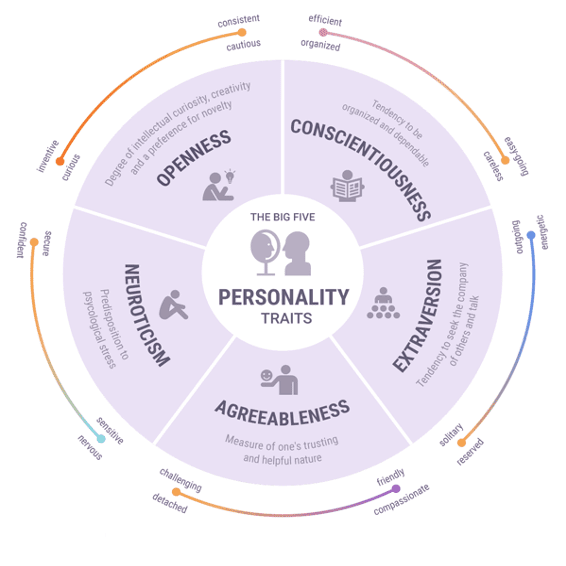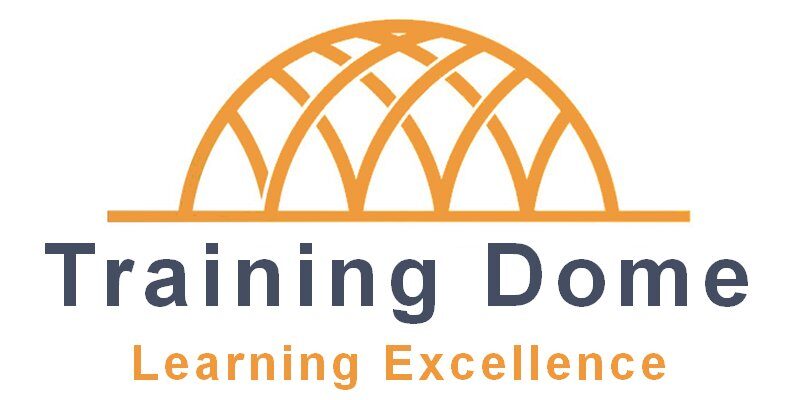Contents of the programme.
Goals.
Who Is This Program For?
For leaders, officials, heads of professional and governmental institutions, businessmen, supervisors, educators, trainers, and administrators at various administrative levels in all departments and institutions.
Program Goals
At the end of this program each participant will be able to:
- Defining personality and distinguishing its basic theories
- Describe the Big Five personality factors
- Administration of the Big Five Personality Factors Scale
- Interpreting the standard and providing advice on it
- Apply the Big Five factors in various fields
Content.
The Course Includes Various Training Methods, Including Theoretical And Practical Aspects With Realistic Examples, Purposeful Games, Role-Playing,
And Individual And Group Exercises.Unit 1
- Definition of personality
- Personality and behavior
- Is personality inherited or acquired?
- Does a person’s personality remain constant or change?
Unit 2
- Personality theories
- School of psychoanalysis
- Personality types theory
- Trait theory
- Cattell model
- Hans Eysenck model
Unit 3
- Development of trait theory
- The difference between themes and patterns
- The most important personality measures and tests
- The 16-factor scale 16 PF
- Myers-Briggs MBTI test
- Big Five Factor Test
- Primary attributes and sub-attributes
Unit 4
- Administer the Big Five Factor Scale
- Interpretation of the Big Five factor scale
- Responsibility and commitment Conscientiousness
- Extraversion and fun Extraversion
- Harmony and Agreeableness
- Emotional Stability
- Openness and renewal
- Applications of the Big Five Factor Scale
- Review and conclusion

What will you get in this program?


About the programme.
The Leading Training Program In Personality Analysis. Assessing The Big Five Personality Factors.

The Big Five personality model is one of the most important and most recent models that explain personality traits, and it is the most widely used and widespread today. The Big Five model aims to group a large number of traits into unique basic categories that include most of what we call “personality.” These Big Five traits are: openness, conscientiousness, extraversion, agreeableness, and neuroticism (sometimes called its inverse, emotional stability). These five traits are not “types” of personalities but dimensions of personality. So someone’s personality is a combination of each of these five traits and characteristics.
This course is designed to introduce participants to the Big Five model of personality, its development, importance and applications at the business or personal level.

The Course Includes Each Participant Assessing Their Personality Using The Big Five Personality Scale. Training In Its Management And Interpretation Of The Resulting Report, In Addition To Its Applications In Various Fields.
Common uses for assessing DISC dimensions of behavior
The assessment of behavioral dimensions can be used in a variety of applications: from personal development, to leadership training, to recruitment and selection. It is an effective tool that enables management to make decisions that will deliver many benefits across a range of functions and businesses.


How to register?
You can register in one of the following ways:
- Online registration
- Email: dubai@alphatraining.co.uk
- Mobile/WhatsApp:
You can pay in one of the following ways:
- Payment via credit card online
- Direct bank transfer (please call for bank details)
- Please send an invoice to my company/organization (based on an approved purchase order from the company or organization).

What they say about our programme.

Remote training method.
This system consists of five steps as shown below.
Step 1
Registration1. Registration
Register and pay the fees online or in any other way. The training material files, and all other files and documents related to the program, will be sent to each participant. Those registered in the program will also be informed of how to use the technology that each participant needs to join the live online training.
Step 2
Preparation2. Preparation
Each participant studies the training materials and writes down any notes or questions to discuss during the course.
Step 3
Online Training3. Online Training
Participants attend live online training. The trainer does the following:
- Explain what needs to be explained from the training content
- Answering participants’ questions.
Step 4
Evaluation and Graduation4. Evaluation and Graduation
This is the final step in which each participant does the following:
- Complete the online course evaluation form
- Graduation and awarding of certificates





